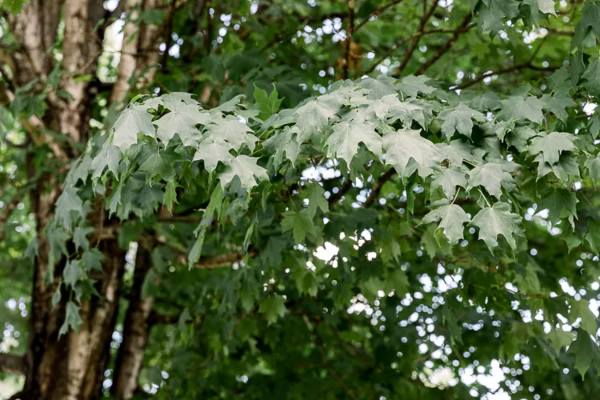Many people love planting maples because they are good as shade, street, and specimen trees. Maples are popular for their autumn leaves color; many species display oranges, browns, yellows, and reds yearly. Some leaves even feature several of these colors at once. Another attractive trait of the maple tree is its ability to tolerate drought.
Maples have many species in the genus Acer within the plant Aceraceae. Most maple trees are deciduous woody plants. You can find them ranging from multi-stemmed shrubs to large upright trees with large trunks.
Some facts about maple trees
- Most maple trees are shallow-rooted trees that can take up space on the sidewalks and other paving surfaces. So, it is advised not to plant it too close.
- Many varieties of maples develop thick exposed roots that make it hard to mow lawns. So, these types are better planted in a woodland setting or where the ground around them can be provided with mulch.
- Since most maples are moisture-seekers, their roots might infiltrate water pipes or sewer lines if planted above them.
- Before planting a maple tree, always check the behavior of the maple species.
Also, Read Top 12 Popular Types of Magnolia Trees and Shrubs!
Species of maple trees
-
Amur Maple (Acer ginnala)
The Amur maple is one of the smallest trees in the Acer genus. It either grows as a spreading multi-stem shrub or a small tree with a dense, rounded crown. It is sometimes classified as a subspecies of Tatarian maple, carrying the label Acer tataricum subsp. ginnala. Amur maple is also known by its common name Siberian maple.
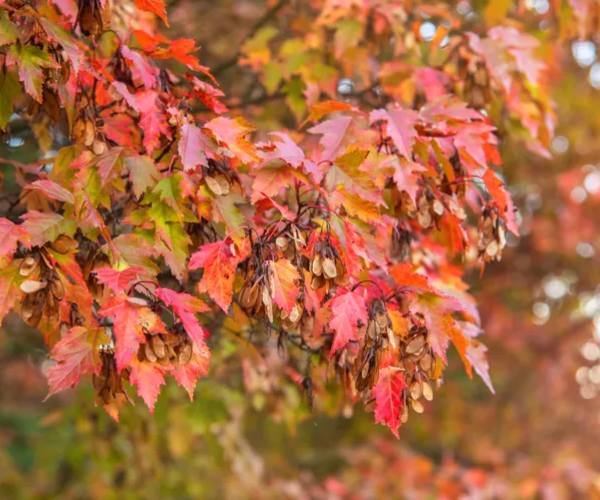
During fall, the leaves turn red and sometimes yellow. The Embers and Flame varieties often have vibrant fall colors in both leaves and fruits. Once mature, the Amur maple becomes drought-resistant.
- Native Area: Korea, Japan, Mongolia, Siberia
- USDA Growing Zones: 3 to 8
- Height: 30 feet
- Sun Exposure: Full sun to partial shade
2. Big Leaf Maple (Acer macrophyllum)
You might have already guessed from its name, the leaves are very large on this tree. It has the biggest leaves of any species of maple; the classic five-lobed, palm-shaped leaves can be over 12 inches wide. This tree is also called broadleaf maple and Oregon maple.
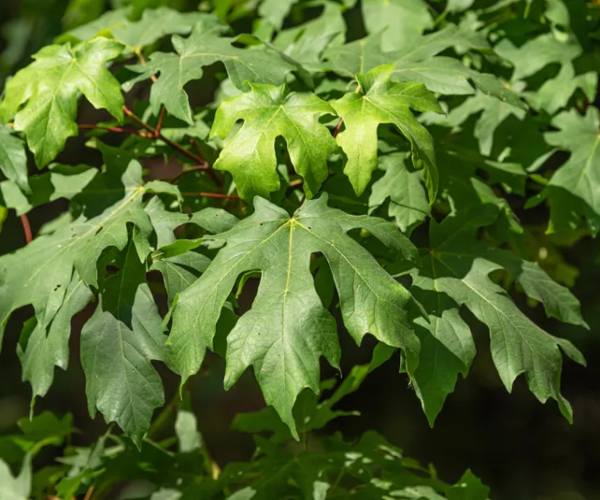
Big leaf maple is a massive, thick-bodied tree tree that features furrowed gray or reddish-brown bark. During spring, the foliage is burgundy, turning green in summer, then yellow or yellow-orange in fall. This large tree provides excellent shade for large landscapes and parks.
- Native Area: Western North America, from Alaska down to southern California.
- USDA Growing Zone: 6 to 7
- Height: 20 to 100 feet
- Sun Exposure: Full sun to full shade
3. Hedge Maple (Acer campestre)
This species of maple is a perfect choice for the urban garden as it thrives even in many difficult environments: drought; acidic, alkaline, or salty soils; shady locations; and climates where there is ozone deficiency. It also serves perfectly as a street tree if the power lines are high enough.
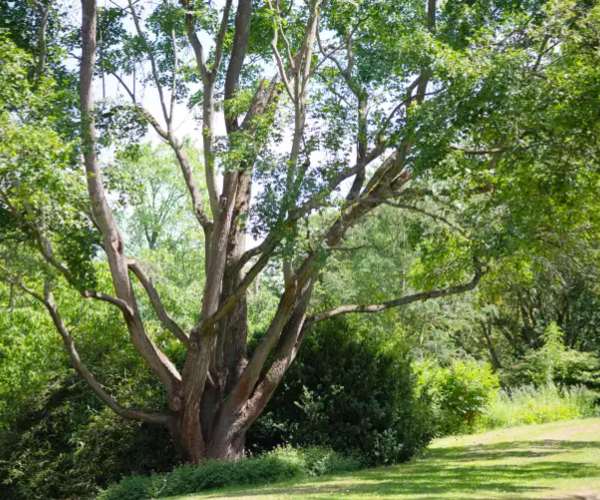
Other common trees of hedge maple are field maple or common maple. This maple can be found in small- to medium-sized and serves as a shade tree in small landscapes. In larger landscapes, it can even serve as a hedge plant.
- Native Area: Europe and southwestern Asia
- USDA Growing Zones: 5 to 8
- Height: 25 to 35 feet
- Sun Exposure: Full sun to part shade
4. Hornbean Maple (Acer carpinifolium)
Many maple plants within a genus have a similar appearance. It is the same case with hornbeam maple but with a surprise. Its leaves look nothing like what you expect from a maple tree. Instead, as you may have guessed from its scientific and common name note, the foliage looks more like that of the hornbeam tree.
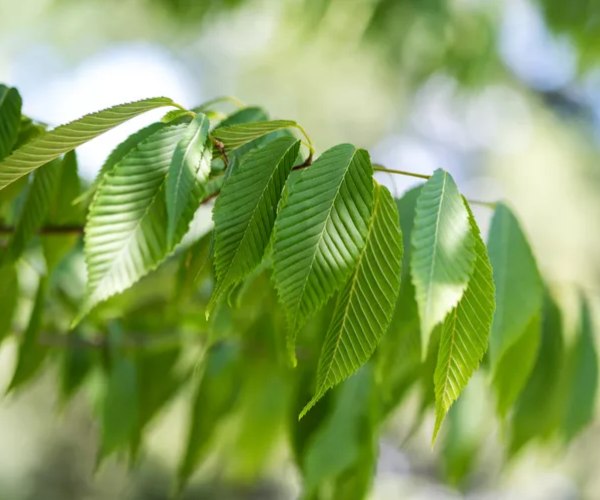
While the classic maple has palmate lobes, this species has loveless elongated leaves with pointed tips and corrugated texture. Its green leaves turn yellow or brownish-gold in fall. This can be a somewhat difficult plant to find for sale. It makes a great small tree or a large shrub in the landscape.
- Native Area: Japan
- USDA Growing Zones: 4 to 7
- Height: 15 to 30 feet
- Sun Exposure: Full sun to partial shade
5. Japanese Maple (Acer palmatum)
The Japanese maple is very common in many Japanese gardens and in the world of bonsai. Its leaves are either green or red and come in different shapes and textures. There are thousands of cultivars. Its leaves are a bit different than other maples because they have more lobes and a finer texture. Fall colors vary greatly on cultivar; yellows; red-purples, and bronze hues.
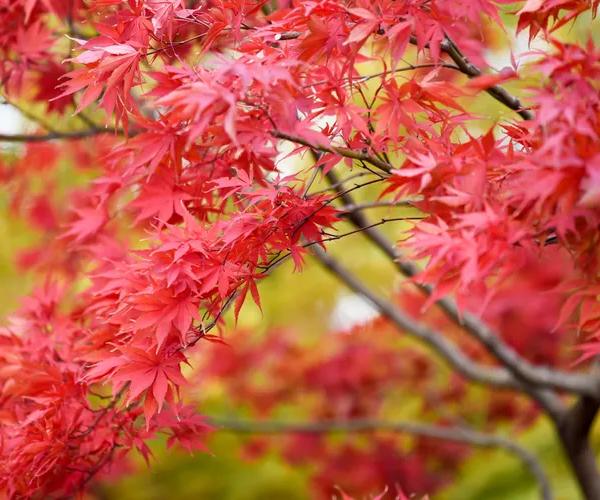
This species can be a main attraction in many types of garden designs. Dwarf varieties of Japanese Maple are often used as ornamental shrubs, while larger cultivars are planted as small specimen trees. This plant is sensitive to both heat and cold. Severe cold in winter can cause this plant to die.
- Native Area: China, Korea, Japan
- USDA Growing Zone: 5 to 9
- Height: Usually 15 to 25 feet
- Sun Exposure: Full sun to part shade, may survive full shade
6. Norway Maple (Acer platanoides)
This popular species is also known as Norway maple or European maple and was introduced to North America from Europe in the 18th century. Since then, it has become one of the most prevalent trees. This medium-sized tree has an attractive dense crown that is symmetrically round. However, it is a shallow-rooted tree.
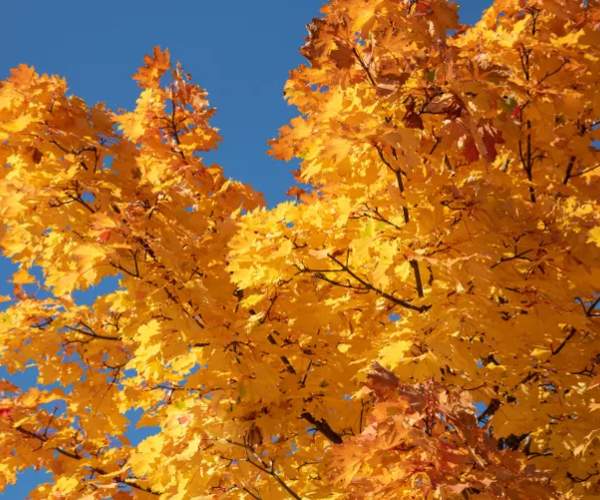
If provided with the right conditions, this species will be invasive. So, before planting it, make sure it is not a problem in your space.
One of its most popular varieties is Crimson King which features very attractive maroon leaves throughout its growing season. The fall, however, is unremarkable, turning grayish. Other varieties normally have yellow hues in fall.
- Native Area: Europe and western Asia
- USDA Growing Zones: 3 to 7
- Height: usually 40 to 50 feet; sometimes as much as 90 feet
- Sun Exposure: Full sun to part shade
7. Paperbark Maple (Acer griseum)
The paperback maple has cinnamon or reddish-brown colored bark that peels away from the trunk, even when the tree is young.
This tree is small-rounded with narrow upright branches. The leaves are three-lobed and are medium green on the top surfaces and the bottom surfaces are gray-green.
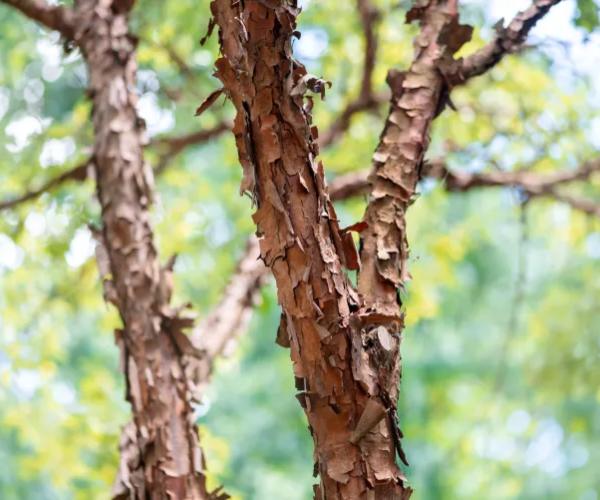
In fall, you can see the foliage turning into dramatic shades of orange and red. The paperbark maple is a great choice for all landscapes. It looks wonderful when planted near a deck or patio.
- Native Area: Central China
- USDA Growing Zones: 4 to 8
- Height: 15 to 30 feet tall and wide
- Sun Exposure: Full sun to part shade
8. Red Maple (Acer rubrum)
You can see where it got its name from as this tree stays red at many points throughout the year. The fresh buds turn into red seed structures hanging from reddish twigs. Reds return to the tree with the change in fall color. Red maple’s medium size is common in North America. It is a classic shade tree with a rounded or oval-shaped crown.
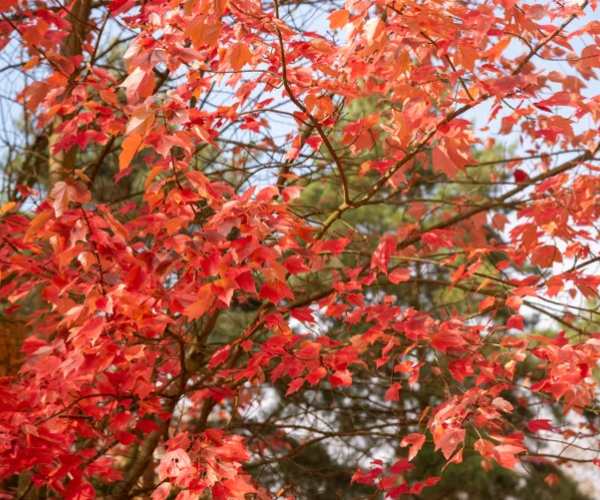
Regionally, this tree has many different common names: scarlet maple, soft maple, Drummond red maple, Carolina red maple, swamp maple, trident red maple, and water maple.
- Native Area: Eastern U.S. and Canada
- USDA Growing Zones: 2 to 9
- Height: 30 to 100 feet
- Sun Exposure: Full sun to partial shade
9. Silver Maple (Acer saccharinum)
Like its name, the silver maple’s leaves are silver and flash attractively in the wind. This is one of the trees you will most likely see throughout the U.S. since it is a great naturalizer and grows quickly. Seedlings may quickly spout up and overtake a landscape in a neglected yard.
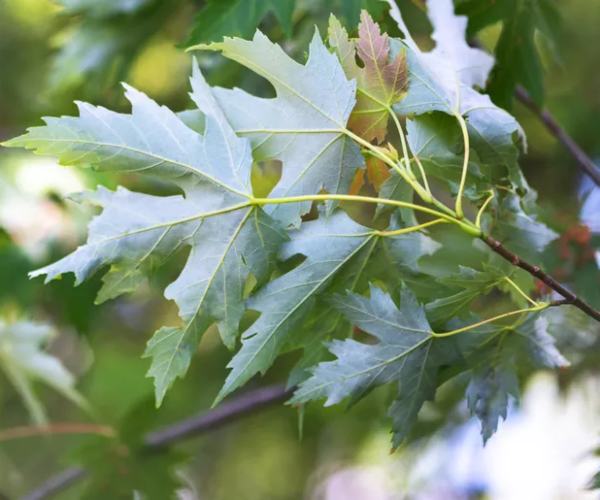
Other names for the silver maple are soft maple, creek maple, river maple, white maple, and water maple. In the fall, this tree shows shades of yellow, orange, or red. This is another shallow-rooted tree that should be planted away from paving and pipes.
- Native Area: Eastern U.S. and Canada
- USDA Growing Zones: 3 to 9
- Height: 50 to 100 feet
- Sun Exposure: Full Sun
10. Sugar Maple (Acer saccharum)
If you’re seeking to make maple syrup then this is the perfect choice. Its sap contains a greater percentage of plant sugars than any other maple species. Under the right circumstances, it makes a good shade tree but it is not a great tolerant of urban conditions.
Sugar Maple does not do well with compacted soils, road salts, or pollution. It does, however, tolerate shade better than most large deciduous trees.
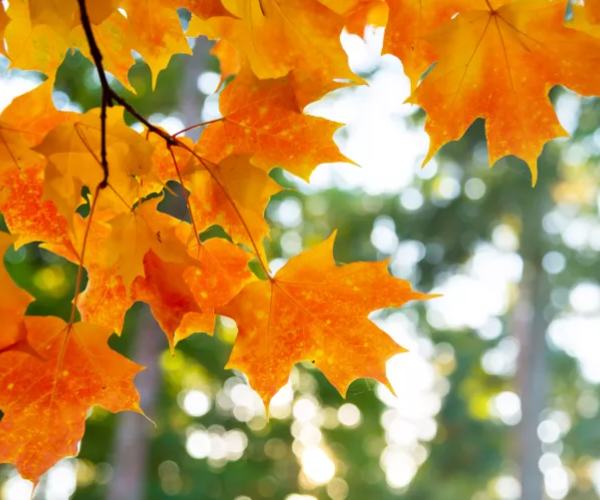
- Native Area: Northeastern and southeastern U.S. northeastern Canada
- USDA Growing Zones: 3 to 8
- Height: 50 to 80 feet
- Sun Exposure: Full sun to full shade
FAQs
Q: Are maple trees a good addition to your yard?
A: Yes, there are many reasons a maple tree would be a great addition to your yard. For starters, these mighty trees are fast-growing, can tolerate most soil conditions, and can grow anywhere. Additionally, these trees can produce colorful foliage in the autumn.
Q: How quickly do maple trees grow?
A: It will depend on the type of maple tree. Red maples, for example, will grow at a rate of up to 24 inches annually.
Also, Read These 15 Plants Will Keep Unwanted Bugs Out of Your Garden
